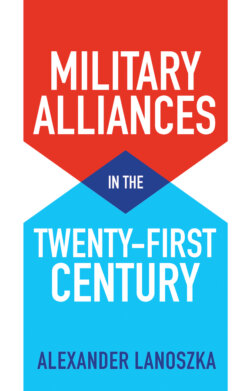Читать книгу Military Alliances in the Twenty-First Century - Alexander Lanoszka - Страница 12
Conventional wisdom #3: Members of US alliances must do more to bear their fair share of the common defense burden
ОглавлениеPresident Trump frequently chided allies in Europe and East Asia for not spending enough on their militaries and thus not bearing their share of the collective defense burden. He menacingly threatened abandonment in pushing NATO members to spend 2 percent of their gross domestic product (GDP) on defense so as to fulfill the pledges made in 2014. Yet, among US presidents, Trump was unique mostly only in tone. Many of his predecessors had complained that US allies could do more to bear the burden more equitably. During the Cold War, US presidents were exasperated by the perceived inadequacy of their allies. Though these alliance criticisms have been around for a long time, such complaints have gathered force in more recent times because the United States is not as powerful as it used to be.
The premise of most contemporary burden-sharing controversies, financially grounded as they often are, is a faulty one, however. The presumption is that allies could contribute to the common defense burden in a more equitable manner. That sounds reasonable enough, but what does it really mean in practice? Chapter 4 notes that part of the reason why burden-sharing controversies arose in the first place is because of how military alliances have come to last longer, a result of how war itself has become so costly in light of nuclear weapons. Crucially, advances in military technology create contradictory incentives when it comes to defense spending. On the one hand, the growing sophistication and complexity of weapons platforms require sustained long-term investment on the part of states to ensure that their militaries do not lag behind their competitors or even allies. On the other hand, nuclear deterrence may make militarized conflict less likely, which in turn drives down the willingness of states to spend on defense. Some states might even believe that spending on conventional military power could make nuclear war more probable. The relationship between defense spending and the collective good of deterrence is, to say the least, hardly linear. Common thresholds for evaluating defense contributions – as in the 2 percent guideline used by NATO – make little sense.
